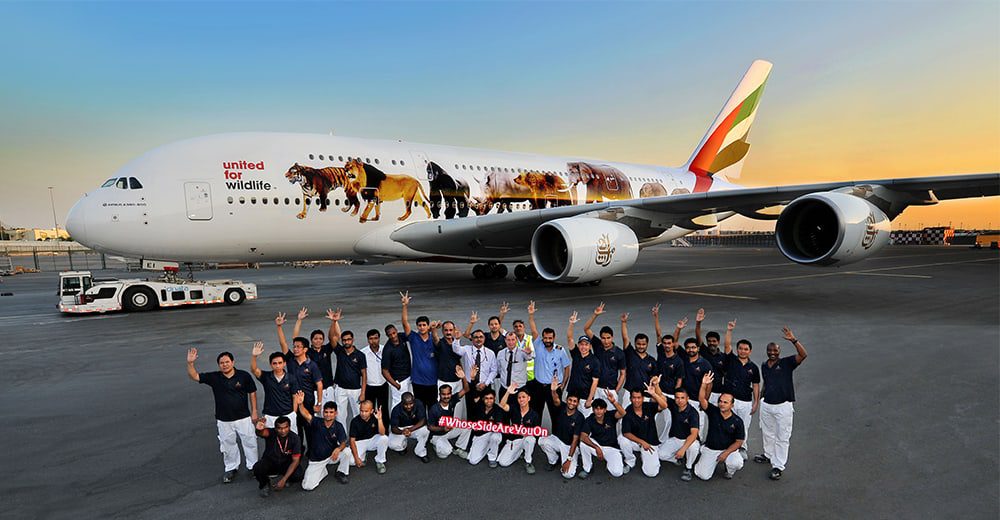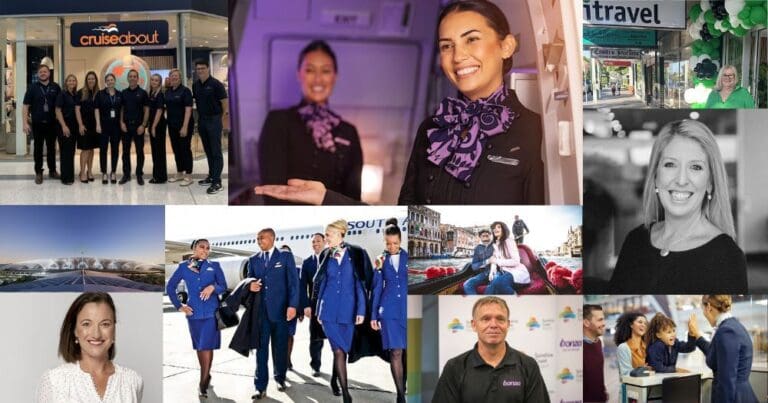Two massive Emirates A380 jets take to the skies this week, wearing special livery in support of United for Wildlife to fight against the illegal wildlife trade.
The beautiful livery, featuring some of the planet’s wildlife threatened by poaching and the illegal wildlife trade, aims to raise awareness of the illegal wildlife trade and communicate the need for urgent action.
Sir Tim Clark, President Emirates Airline said: “Many animals, in particular African elephants, rhinos, tigers, and pangolins, are under extreme pressure because of an unprecedented spike in the illegal wildlife trade. Emirates believes that the global transport industry, including airlines, can play a significant role to break the supply chain of illegal wildlife trade. And at Emirates, we are committing the resources to do our part.”
Consumers too, can contribute in a big way, by boycotting products made from the parts of these endangered animals and discouraging others from doing so.
The wildlife decal
Emirates’ two A380s will be operating flights this week. The first one departed for London (LHR) on 2nd November and a second will operate to Mauritius (MRU) on 5th November, each wearing a different design featuring endangered wildlife.
The decal on the first flight featured six endangered species, while the second flight will feature a decal with rhinos and elephants. Both designs cover the world’s largest passenger aircraft almost from nose to tail, spreading over the wings and under-belly of the plane.
Quick facts about the threat to wildlife from poaching and illegal trade
- There are as few as 3,200 tigers left in the wild. Illegal trade in their parts and products is one of the biggest threats to wild tigers. Between 2000 and 2014, the parts of at least 1,590 tigers were seized in Asia.
- Rhino poaching in South Africa increased from 13 rhinos in 2007 to 1215 rhinos in 2014. That now equates to more than three rhinos a day. Africa-wide, 1,293 rhinos are reported to have been poached in 2014.
- Around 30,000 African elephants are killed by poachers each year. Central Africa is worst hit with a poaching rate twice the continental average. Left unaddressed, poaching could cause the extinction of elephants in Central Africa.
- The pangolin is the world’s most-trafficked mammal. Over a million pangolins are estimated to have been poached in the last ten years.
- Park rangers are often ill equipped and inexperienced to tackle armed and ruthless poachers. Poaching syndicates have changed the way they operate and are now using sophisticated weaponry and equipment to increase their activities and avoid detection (helicopters, veterinary drugs, night vision equipment). 1,000 rangers are estimated to have been killed in ten years while protecting wildlife.
To learn more, visit www.unitedforwildlife.org







